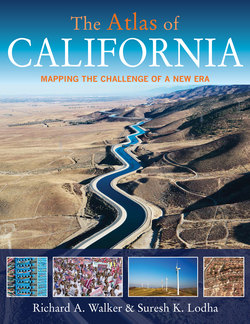Читать книгу The Atlas of California - Suresh K. Lodha - Страница 18
На сайте Литреса книга снята с продажи.
ОглавлениеLAND & PEOPLE
California occupies one of the five Mediterranean climate zones of the world (wet winters, dry summers). Heavy fog off the Pacific cools the coastal regions from Mendocino to San Diego during the summer. Far Northern California sees the most rain, akin to the Pacific Northwest. In far Southeast California lies desert: the Mojave and pieces of the Colorado and Sonoran zones. The Sierra and northern mountains enjoy heavy winter snowfalls, the southern mountains a light dusting. The state’s flora and fauna are remarkably diverse, combining species adapted to a Mediterranean regime, those tolerant of the extremes of alpine and desert climates, and remnant species from wetter and colder epochs. California has more endemic (unique) plant species than any other part of the continental US. Some, such as the sequoias and bristlecone pines, are wonders of the world. Others, such as Monterey pines and California poppies, are common in gardens and plantations worldwide. Californians have profited from cutting the forests of redwood, fir and pine growing thick along the northern coast and along the mountain ranges, and even more so from farming the broad valleys beneath the summer sun. Yet resource extraction left a legacy of ravaged landscapes and agriculture introduced a host of new species that displaced the native flora and fauna. The combination of rare beauty and rampant devastation is key to Californian’s legacy of conservation.
19
